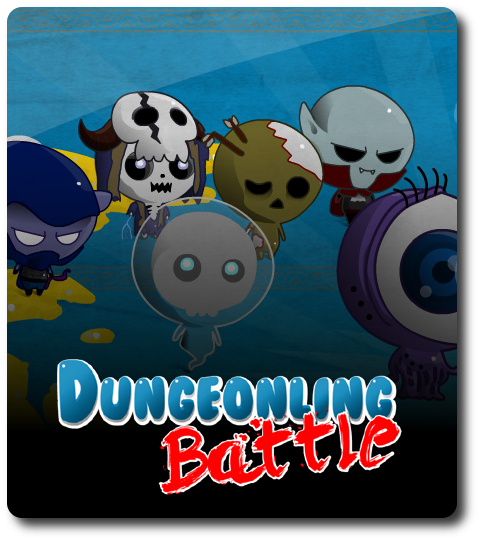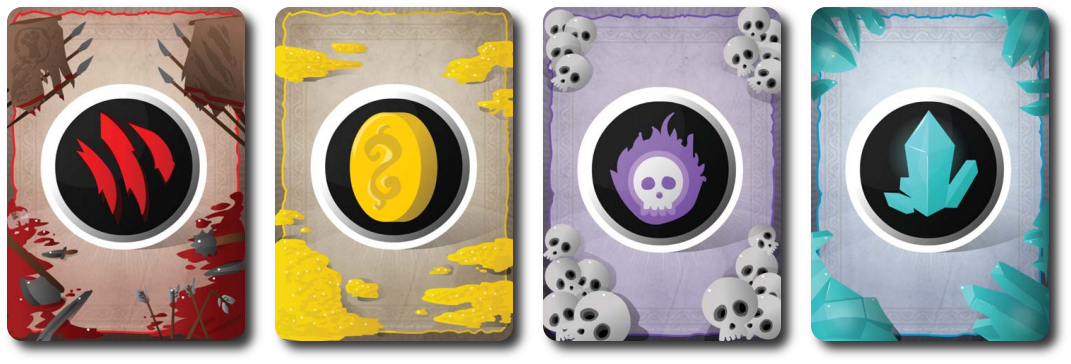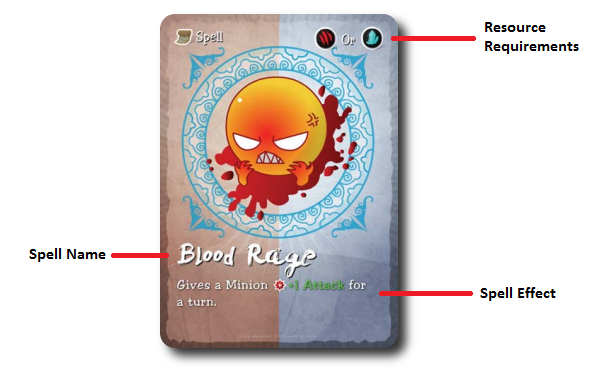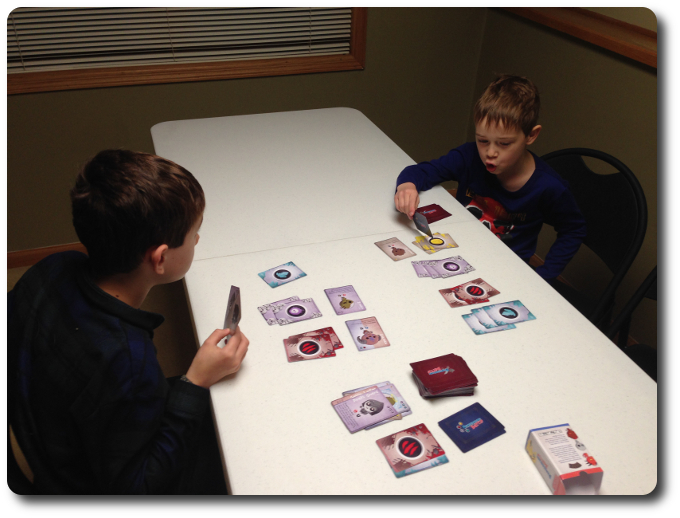
The Basics:
- For ages 7 and up (publisher suggests 12+)
- For 2 to 3 players
- Approximately 20 minutes to complete
Geek Skills:
- Active Listening & Communication
- Counting & Math
- Logical & Critical Decision Making
- Reading
- Pattern/Color Matching
- Strategy & Tactics
- Hand/Resource Management
Learning Curve:
- Child – Easy
- Adult – Easy
Theme & Narrative:
- Guard your hoard of dungeon loot using the cutest minions ever summoned
Endorsements:
- Gamer Geek approved!
- Parent Geek approved!
- Child Geek approved!
Overview
Owning a dungeon is not all that it’s cracked up to be. A lot of people don’t realize how much work it is to keep pesky adventurers out, the daily maintenance of traps, and the never-ending department meetings with minions. It’s enough to make a Dungeon Lord crazy and call it quits. Which would explain the high turnover in the business. Well, that and the fact that dungeons are dangerous places to work. Still, you go to “The Job” every morning and count the days until you retire. Meh. It’s a living.
Dungeonling: Battle, designed by Jackson Lin and published via the Game Crafter, is comprised of 87 Minion/Spell cards and 20 Spoil cards. The illustrations by Mr. Lin are excellent, capturing the fantasy creatures in a highly stylized, cutesy manner. For those of you in the know, the type of style being used is referred to as “Chibi“. The game itself is printed on card stock and is as durable as your standard playing card. Examples of all the illustrations in the game are freely available by downloading the card sheet.
Prepping Your Dungeon
To set up the game, fist separate the cards into two different piles: Minion/Spell cards and Spoil cards. The cards will have different card backing colors making this an easy and quick exercise.
Second, shuffle each pile separately and place them next to each other, face-down, in the middle of the playing area. Leave room for a discard pile. These are the Minion/Spell and Spoil draw decks for the duration of the game.
Third, determine who will be the first player. In turn order sequence, each player will draw 1 card from either draw deck until all players have a total of 5 cards in their hand. Their hand can be any combination of Minion/Spell and Spoil cards. Players are allowed and should review what cards they already have before drawing a new card during this portion of the game set up.
That’s it for game set up. Time to see who is truly the Lord of the Dungeonlings.
Quick Inspection of Your Dungeon
The players will be taking on the roles of powerful Dungeon Lords who think they are better than everyone else and willing to prove it by any means necessary. That’s where the Minions, Spells, and Spoils come into play. These three card types will be the muscle, fuel, and goal that drives the player’s adorable war machine into battle.
Resources
The players have built their underground dungeon kingdom and collected the spoils in dark vaults. The resource types include “Carnage”, “Coin”, “Soul”, and “Mana”. Or, if you prefer, “Battle Power”, “Wealth”, Dark Power”, and “Magic”. Honestly, “what” the resource represents is not all that important to the game play. What is important is how much and of what resource type the players have as the resources power everything in the game. This makes them the single most important thing in the game and also the most vulnerable. Luckily, the players have Minions to call upon and Spells to cast that will help them protect their treasures and steal power from their opponents.

From left to right: Carnage, Coin, Soul, and Mana
Minions
The player’s Minions are the player’s warriors and rearguard. Each Minion costs a specific number of resources and provides both an attack and defense value. Some of the Minions will have a Special Ability that is triggered when they are played and some that can be activated later in the game.

Spells
Spells are powerful and break the laws of the natural world. So, of course, the Dungeon Lords use them. But such power is fleeting and the benefits of spells are lost in the very next moment after they are cast. This challenges the players to consider not only how the Spells should be used, but when. Like the Minions, all Spells must be powered by the player’s resources.

Dueling Dungeons
Dungeonling: Battle is played in turns with no set turns per game. A player’s turn is summarized here. It’s recommended that players announce which actions they are taking to help keep the game play flowing and reduce any confusion that might be caused through quick card plays. Put another way, tell your opponents what you are doing so they can keep up. This is a pretty fast game.
Step 1: Take 3 Actions
On a player’s turn, they will be able to take a total of 3 actions out of a possible 5. The player can take any action they like and take the same action multiple times. The first player is only allowed to take 2 actions on their first turn. After their first turn is over, they can take up to 3 turns like the other players.
When playing Minions and Spells, the player must be able to “pay” for them using their previously played Spoil cards. The player need only have the right number and type in order to play the card. Spoil cards are never “exhausted” or discarded when used to bring out another card or trigger an ability.
Action: Draw
This action allows the player to draw 1 card from either the Minion/Spell or Spoil draw deck. Not both. The drawn card is placed in the player’s hand and can be played whenever the player is able to do so.
Action: Hoard
This action allows the player to play 1 Spoil card to their Hoard pile. A player’s Hoard pile contains 1 or more Spoil cards organized in columns by resource type. There is no limit to the number of cards the player can have in their Hoard pile during the game.
Action: Guard
This action allows the player to place 1 Minion in front of one of their resource columns in their Hoard pile or in front of the player to signify the Minion is guarding the player’s hand. This Minion is placed so it’s on top of the column and rotated so it’s in a sideways position or just sideways in front of the player if guarding the hand. This Minion is now a guard and gains a +1 Defense. Minions who are guarding cannot be removed unless vanquished in battle or through other means. Players should take special note of any Minion Special Ability that is triggered when the Minion is played or attacked.
Action: Activate
This action allows the player to use a Minion’s “Activate” Special Ability if they are currently placed as a guard. A Minion’s “Activate” Special Ability can only be used once per turn.
Action: Raid
This action allows the player to send one Minion card from their hand to raid an opponent’s Hoard pile or hand. A Minion placed as a guard can never raid, but they can block a raid. Players should take special note of any Minion Special Ability that is triggered when the Minion is played or attacked.
Raiding is the equivalent to combat, but only if there is a Minion guarding the player’s target. Allowable targets include any one resource row in the Hoarding pile or the opponent’s hand.
If the raid target is not defended, the raid is automatically a success. If the player raided a resource column in the opponent’s Hoard pile, they take 1 Spoil card of that resource and add it to their hand. If the player raided the opponent’s hand, the opponent must discard 1 card from their hand.
If the raid target is being guarded, things become a bit trickier. To begin with, the opponent can take a “Block” free action. This action is identical to the Guard action, but the Minion being played jumps in front of the Minion that is currently guarding. All combat will now be against this blocking Minion instead of the guarding Minion. Additionally, both players can play Spells as a free action, changing the Attack and Defense strengths of the Minions. When the cards are done being played, the battle is resolved. This is done by comparing the player’s attacking Minion’s Attack value to the opponent’s defending Defense value. REMEMBER! Guarding Minion gain a +1 to their Defense! Blocking Minions do not.
- If Attack is GREATER than Defense, combat and raid is successful. Send the guarding Minion to the discard pile and the player collects Spoils or forces a discard.
- If Attack is EQUAL to Defense, combat is successful but raid fails. Send the guarding Minion to the discard pile, but the player does not collect Spoils or force a discard.
- If Attack is LESSER than Defense, combat and raid fails. Guarding minion remains. No Spoils are lost and no discard is required.
Regardless of the outcome of the raid, the player’s raiding Minion is discarded and the minion played by the opponent as a block is discarded. The only Minion that ever remains after a raid is the guard, but only if the guard wasn’t defeated in battle. Damage dealt to a minion is always removed after a battle. This means a heavily damaged guard is automatically healed to full Defense if they survived.
Note that’s possible that a player will lose the required resource types from their Hoard pile that brought forth a previously played Minion. All Minions that were brought into play previously remain in play, despite the necessary resource types and number no longer being available. There is no upkeep in Dungeonling: Battle.
Step 2: End Turn
When the player’s turn is over, having finished taking 3 actions, they must discard down to no more than 8 cards in their hand. What cards they discard is up to them. Discarded Minion/Spell cards are discarded face-up next to the Minion/Spell discard pile. Discarded Spoil cards are placed at the bottom in the Spoil draw deck, although everyone found it faster to simply discard them face-up next to the Spoil draw deck. Discarding face-down keeps everyone guessing how many and of what resource type are left to draw, but a quick scan of the table quickly informs the player what Spoil cards are still possibly available making it unnecessary to “hide” the Spoil cards that are discarded.
The player’s turn is now over and the next player in turn order sequence now takes their turn starting with step 1 noted above. At all times during the game, however, players can cast spells. Even if it isn’t their turn.
Step Whenever: Cast Spells
All players can play a Spell card in or out of turn. The player must have the right type and number of resource cards in their Hoard pile before they play the Spell card. Once played, the Spell card is resolved and discarded. Use of a Spell card never counts towards a player’s 3 action limit during their turn and can be played during a raid to influence the battle outcome.
Becoming the Dungeon Über Lord
The game continues until 1 player has collected at least 3 resources of 3 different resource types in their Hoard pile by the time they end their turn. For example, 3 “Carnage”, 3 “Soul”, and 3 “Coin”. This player has truly proven their ability as a Dungeon Lord and reigns supreme over all the minions.
Game Variant
Custom Dungeon Duels
Dungeonling: Battle is playable right out of the box. It’s also a game that can be easily customized. If using a single deck, the Spoil cards are a shared draw deck as normal. Instead of drawing from the same Minion/Spell draw deck, players draft their army first, creating their own draw decks. This allows players to customize their army, but the overall customization is limited by card availability. By adding a second deck, the players are able to not only increase the number of players who can play the game, but can also create larger custom armies.
To learn more about Dungeonling: Battle, visit the game’s web page.
Final Word
The Child Geeks found this to be a very entertaining game. They enjoyed just about every aspect of it including the illustrations of the Minions, the easy to learn game play, the fun battles, and the thrill of collecting the Spoils. The only aspect they did not like was the lack of abundant resources. Lack of resources will turn a friendly game playing session into a an epic battle about midgame. With only so many resources to go around, the Child Geeks quickly realized that obtaining and guarding what little they had was very important. According to one Child Geek, “What I really like about this game is how easy it starts and then how crazy tricky it gets towards the end. It’s like a rollercoaster ride.” Another Child Geek said, “It’s easy to figure out what you want to do, but it’s sometimes too hard to do it.”. Despite the limit of resources and the continued frustration that many of the Child Geeks felt from not being able to bring out the Minions they had in their hand, they gave Dungeonling: Battle their full approval.

Two Dungeon Lords battle while I watch on, eating chips…
The Parent Geeks found Dungeonling: Battle to be an excellent introduction to strategic and collectible card games, despite Dungeonling: Battle not being a collectible card game. For those Parent Geeks who were already familiar with such games as Pokémon or Magic: The Gathering where resources are used as “fuel” to bring out other cards, Dungeonling: Battle was found to be an easy game to learn and an even easier game to teach. According to one Parent Geek, “This game has simple rules, but gives the players a lot to think about. I think it’s an excellent mix of casual, strategic, and tactical game play.” Another Parent Geek said, “This is a game I would use to introduce games of this type to my kids and other players. Heck, I’d play it even if after the fact.” All the Parent Geeks enjoyed Dungeonling: Battle and gave it their full approval.
The Gamer Geeks fell in love with this game. Not because it requires a lot of strategy or in-depth tactics, and not because the game is full of depth. One Gamer Geek said it best after finishing 3 games in a row, “This is what I would expect a casual game to be: fun to play, complete, easy to learn, difficult to win, and satisfying.” All the Gamer Geeks agreed that Dungeonling: Battle was not nearly as strategic or tactical or had the depth of play as the other dueling card games they enjoyed. They also all agreed that it didn’t matter. Dungeonling: Battle proved to be an excellent game to play as a filler, when waiting for other players, or simply when a quick smack down was in order that required thought, cunning, and good card plays. All the Gamer Geeks approved Dungeonling: Battle.
This is a very entertaining game and I am continually being asked to play it. Not once do I turn a game down. It takes so little time to set up and play, but each game really gets me involved. Expect a 2-player game to be an exercise in ducking and dodging to find weak spots to take advantage of. Expect a 3-player game to be total carnage. As resources quickly become hoarded and guarded, players will focus all their attention on sniffing out the weakest opponent and then tackling them en masse to rob them of everything they are worth. It can get pretty ugly fast and leave some feeling a bit beat up.
And yet, wow, what a cute little game. So easy to learn, so easy to enjoy, and devilishly hard to win at times. The game’s balance is excellent with things only going wonky when a player doesn’t take the time to balance their own Hoard pile with the cards in their hand. This is a game that demands but one thing from its players: focus. If you start looking out the window and daydreaming, you are going to get thumped hard by your opponents. The game moves fast and you have to be quick to spot opportunities for victory before they just as quickly vanish.
Quick, fun, engaging, and best of all, a welcomed game by all, Dungeonling: Battle was a great game to play with family and friends. While I would hesitate to suggest to any hardcore dueling card player that this game is for them, I wouldn’t suggest it wasn’t, either. Do wage some epic battles on your tabletop with this game full of cute bloodthirsty fantasy creatures. You’ll go “aww!” as you go “ACK!”, guaranteed. Never before has a dungeon raid been so gosh darn adorable.
This game was given to Father Geek as a review copy. Father Geek was not paid, bribed, wined, dined, or threatened in vain hopes of influencing this review. Such is the statuesque and legendary integrity of Father Geek.



